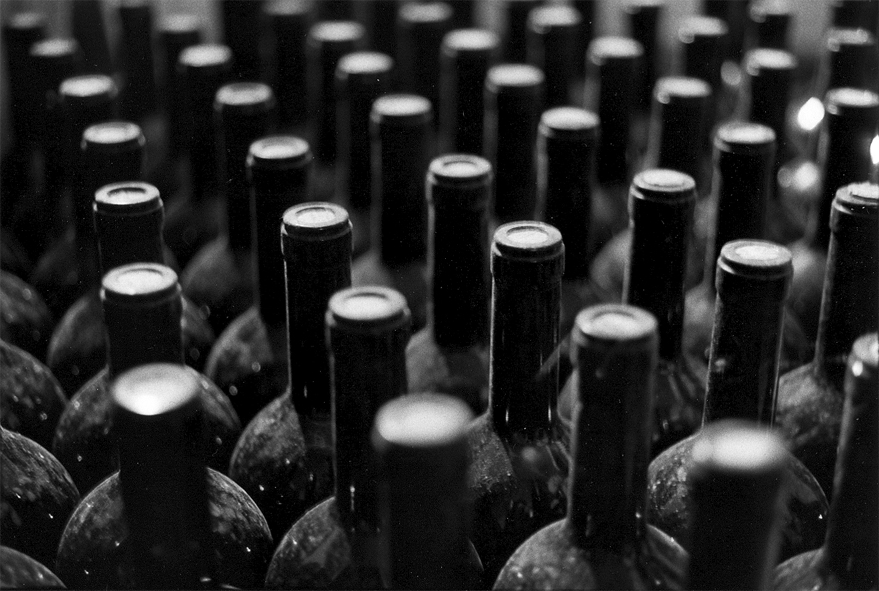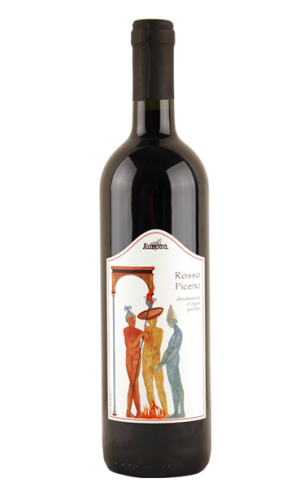

Yield/Hectare: 7,000 kg
Bottles produced: 17000
Grapes: Montepulciano 50%, Sangiovese 40%, Cabernet Sauvignon 10%
The vineyard:
Vines 20 years of age with south east exposure with calcareous, clayey soil
The harvests were done separately by hand, the Cabernet August 28, 2015, the Sangiovese on September 9 and the Montepulciano on September 21, each fermented spontaneously for around 10 days at temperature of 25 degrees C. Pressing was done and the wine was decanted to separate the lees, racked 3 times, filtered to 1 micron and bottled on April 7, 2016.
Tasting notes:
Flaming dark ruby red color.
Immediate and sunny aromas with definite free perfumes of mature plums and wild cherries tied in with comely, flowery notes.
The progression on the palate starts with a generous, spontaneous, open and decided and long profumed stance with wonderful sapid notes, sparkling tannins and a clean finish with a return to fruitiness. In 2015, it is an extremely versatile wine to enjoy with friends if served fresh accompanying prosciutto or a soup of pasta and beans.
Analysis:
- Alcohol: 13,29%
- Total acidity: 5,2 g/L
- Total anhydrous sulfur: .64 g/L
- Volatile acidity: .61 g/L
- Dry extract: 29,1 g/L
- Residual sugar: 0,5 g/L
Label: designed by Carlo Marchetti and represents the “Velurd” traditional carnival festival of Offida.
Yield/Hectare: 7,000 kg
Bottles produced: 16,650
Grapes: Montepulciano 50%, Sangiovese 40%, Cabernet Sauvignon 10%
The vineyard: Vines 18 years of age with south east exposure with calcareous, clayey soil
The harvests were done separately by hand, the Cabernet September 27, 2014, the Sangiovese on September 30 and the Montepulciano on October 4, each fermented spontaneously for around 10 days at temperature of 25 degrees C. Pressing was done and the wine was decanted to separate the lees, racked 3 times, filtered to 1 micron and bottled on April 9, 2015.
Tasting notes: Ruby red with luminous ruby reflections. In the nose, young and impertinent, perfumes of fresh red fruits, a bit rough and notes of sour cherries, grapes and mulberry.
In the mouth, the tastes are in perfect symphony with the aromas: the juicy acidity and its full body,
pure tannins of the fruit and the exuberance of the alcohol marry in a fine duet which then returns to a finale of clear and persistent red fruits.
A wine of immense likability, it can be enjoyed without food, but also excellent with a torte of milo with vegetables or a fresh scamorza which help bring out its dynamic fragrance.
Analysis:
- Alcohol: 12.9%
- Total acidity: 5 g/L
- Total anhydrous sulfur: .69 g/L
- Volatile acidity: .69 g/L
- Dry extract: 28.2 g/L
- Residual sugar: .3 g/L
Label: designed by Carlo Marchetti and represents the “Velurd” traditional carnival festival of Offida.
Sangiovese: One of the oldest italian varieties (blood of Jupiter/sangue di Giove), grown also in Etruscan times. It is the most diffusely planted red grape in Italy, above all in Tuscany, Umbria, and Emilia Romagna. There are many types of Sangiovese, but the two main divisions are: Sangiovese Grosso, the more prized is also less planted, almost entirely in the zone of Montalcino (SI), where it is called Prugnolo Gentile; Sangiovese Piccolo is the more common and is known by various synonyms depending on the zone amongst which is Morellino of Scansano. It is known for wines of intense ruby red color, tannins, good body, harmony and a nice bitterness: it shows fruity aromas when young but after aging they become notably more refined. Often blended with other wines to add color, harmony and aromas.
Montepulciano: The origin of this variety of “black” berries has always been uncertain, it is often confused with Sangiovese, probably because of the existence of the Tuscan town of the same name. Those who have studied it, like Molon (1906) classified it as a Sangioveti. Today it is certain the 2 varieties have nothing in common. It is most commonly cultivated in Abruzzo, Le Marche and other central/south Adriatic regions.
It has many names, such as Montepulcian of Abruzzo, Primaticcio, Cordisco etc. Today, thanks to the excellent work of some producers and winemakers, Montepulciano has risen to become one of the red wines of highest quality. Montepulciano prefers a hot, dry climate with a sun drenched exposition to guarantee a good and regular maturation of the grapes. When it is vinified by itself, the wine is guaranteed to be of high quality, good for aging while at the same time improving wines of other varieties when blended and can provide aromas similar to some bordeaux wines.
Cabernet Sauvignon: A variety from Bordeaux in the zones of Medoc and Graves, it is the variety most renowned in the world for wines of great quality and longevity. It is often blended with Cabernet Franc and Merlot, other varieties well known from Bordeaux. In Italy there are many versions, both in pure form and blends with other red varieties. It has a great capacity to adapt to many climatic conditions and techniques of vinification, while maintaining it well known characteristics and expressing its “terroir”. It is capable of producing a wine of intense color, rich in tannins and aromatic substances, and a long aging potential thanks to its great structure. It is well suited for long macerations and aging in wood barrels, especially of french oak which allow the wine in time to express complex, charming bouquets.
